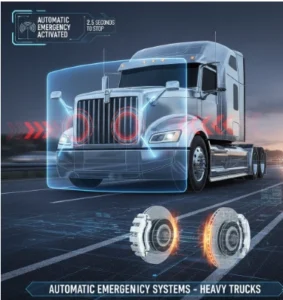The collapse of the Francis Scott Key Bridge will increase road transportation operating costs by $92.8 million annually.
The collapse of a section of the Francis Scott Key Bridge in March 2024, following an accident involving the MV Dali 3 container ship, will lead to a significant increase in road transportation operating costs. According to a study conducted by the University of Maryland and Morgan State University, industry costs are expected to rise by $92.8 million annually starting in 2025, as the bridge is being rebuilt, a process that could extend until 2028.
This increase is due to the collapse, which forced traffic to be diverted to longer alternative routes, particularly impacting trucking companies and haulers serving the Port of Baltimore. Although the port reopened in June, the bridge will not be operational for trucks for several years, further raising overall operating costs by approximately $446 million, according to the study.

Increased travel times for trucks crossing Baltimore
The report focused on medium-duty trucks (14,001 to 26,000 pounds) and heavy-duty trucks (over 26,000 pounds). Researchers noted that, under current conditions, carriers are expected to face an annual increase of approximately 1.1 million additional hours of travel time in the region.
Trucks crossing Baltimore have already experienced travel time increases of up to 58% due to traffic diversions and route restrictions. Heavy-duty trucks, in particular, faced longer delays due to tunnel restrictions and the need to divert traffic to Interstate 695. Trucks using the Fort McHenry Tunnel and I-95 saw a 19.18% increase in travel time, while medium-duty vehicles experienced a 14.18% increase.
The study also showed an increase in traffic volumes on certain routes, such as the Baltimore Harbor Tunnel and I-695, with a 6.28% increase in heavy-duty trucks and a 3.49% increase in medium-duty vehicles passing through the I-895 tunnel. Additionally, the use of longer alternative routes reduced travel times in some areas, but congestion on major routes increased significantly.

The collapse of the Francis Scott Key Bridge reduced cargo volumes
The researchers used over 2 million truck trajectories for the analysis and concluded that the impact of the bridge collapse not only affected transportation routes but also reduced the volume of goods processed at the Port of Baltimore. While 624,526 tons of containers were processed in March, that figure fell to 526,700 tons in October.
This study highlights the magnitude of the bridge collapse’s repercussions on regional infrastructure and the road transportation sector, emphasizing the need to expedite reconstruction efforts to mitigate these effects.

The best fall road trips in the U.S.
The best roads, highways, and routes to enjoy across the United States during the fall season. The United States is home to some of the

In brief: new CDL law, ELD ban, and truck recalls
New CDL legislation to enforce English-only testing nationwide, FMCSA revokes five ELDs and the NHTSA announces major Mack recall. Safe Commercial Driver’s License Act of

FMCSA Final Rule: Automatic Emergency Braking Systems to Be Mandatory on All Heavy Trucks by 2026
FMCSA Final Rule: Automatic Emergency Braking Systems to Be Mandatory on All Heavy Trucks by 2026

TRUCKING – Look at how far we’ve come in the last 100 years
The evolution of the trucking industry in the last 100 years: from a new way of transportation to technological innovation. Trucking in the 1920s: The

Results of Safe Driving Week: more than 2,500 fines and warnings
Operation Safe Driving Week 2025 concluded with a total of 8,739 vehicles stopped. Operation Safe Driver Week 2025 concluded with a significant overview of road

USDOT Withholds $40 Million from California Over English Proficiency “Rule Rebellion”
The U.S. Department of Transportation (USDOT) has announced that it will withhold more than $40 million in federal highway safety funds from California for failing to enforce national English Language Proficiency (ELP) standards for commercial truck drivers.
